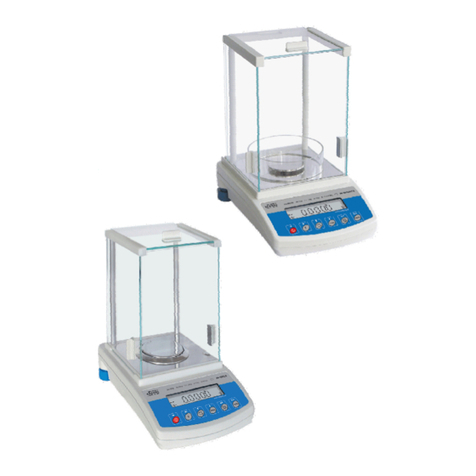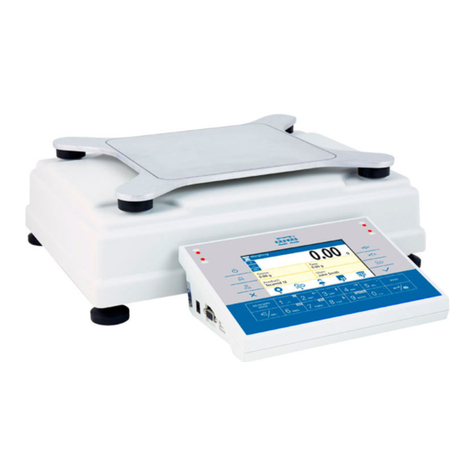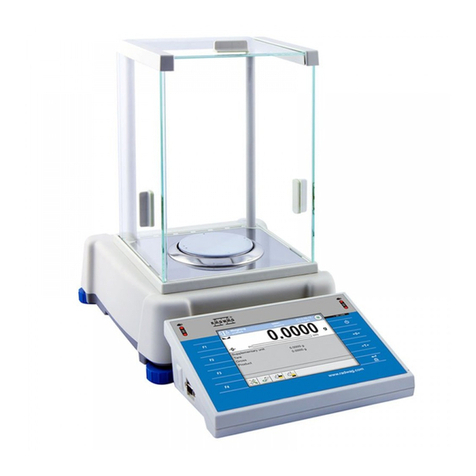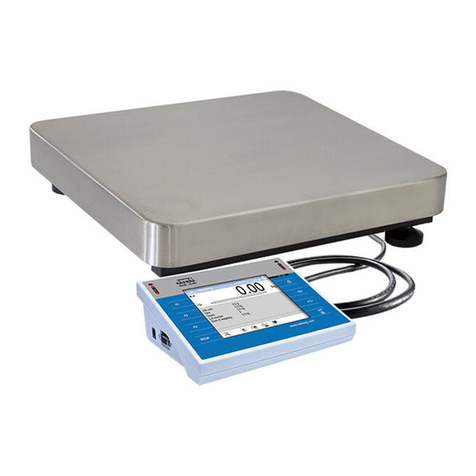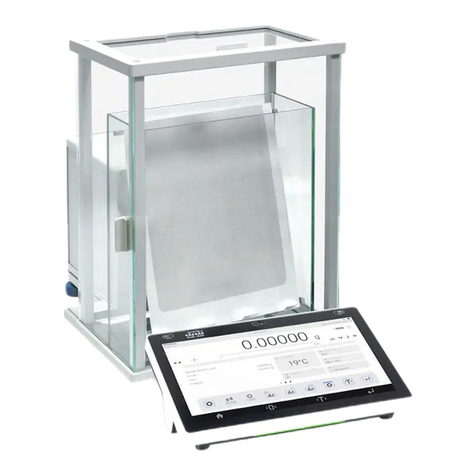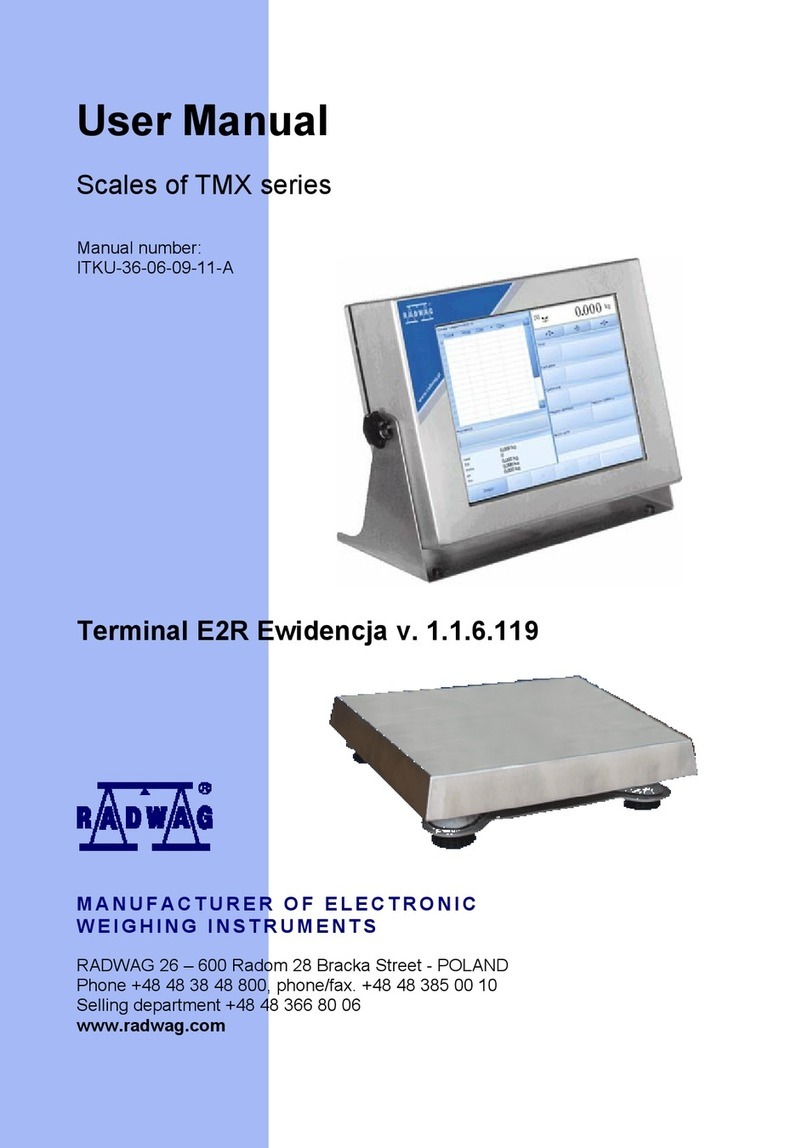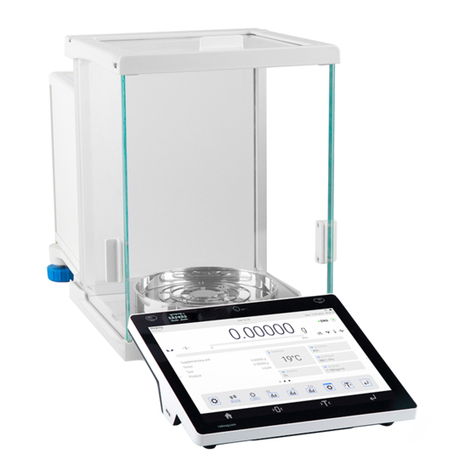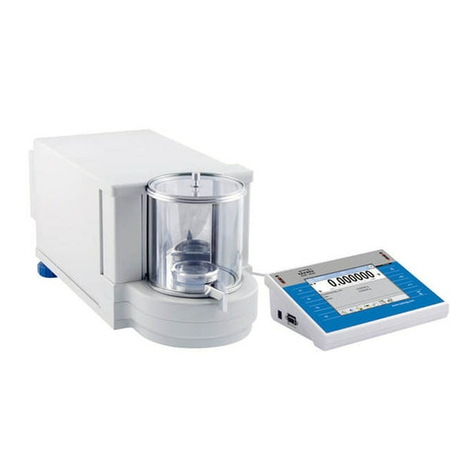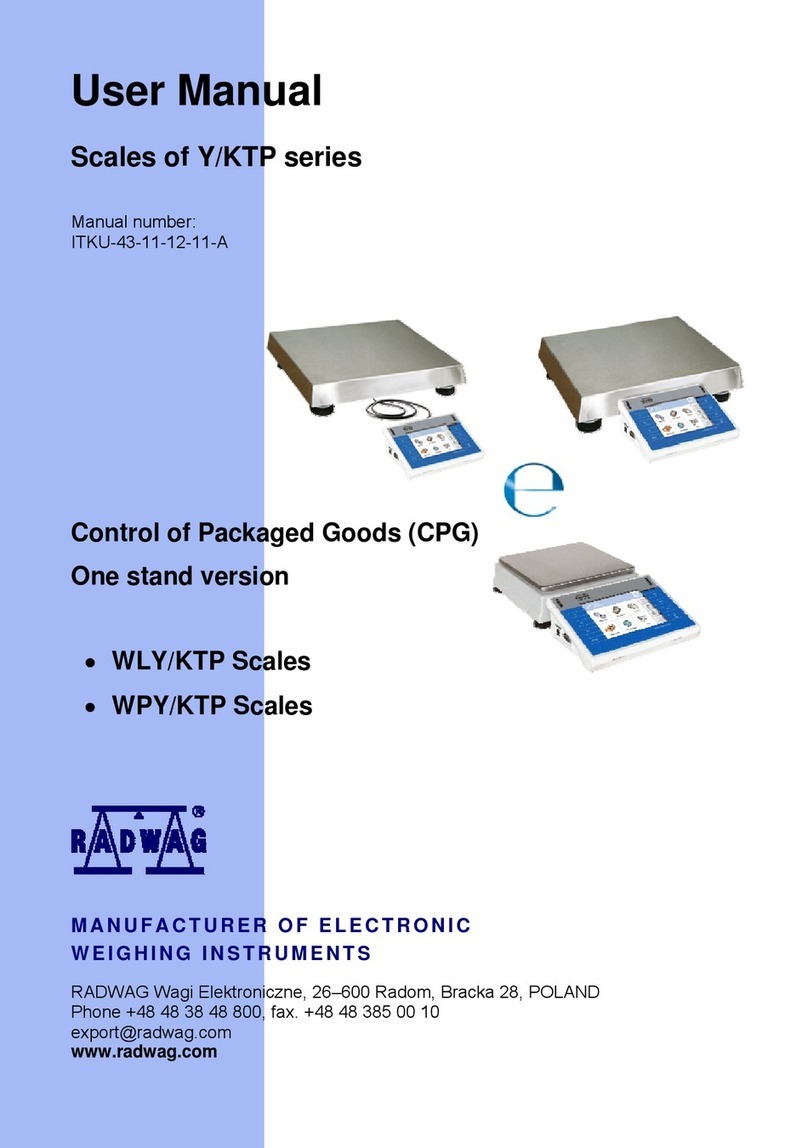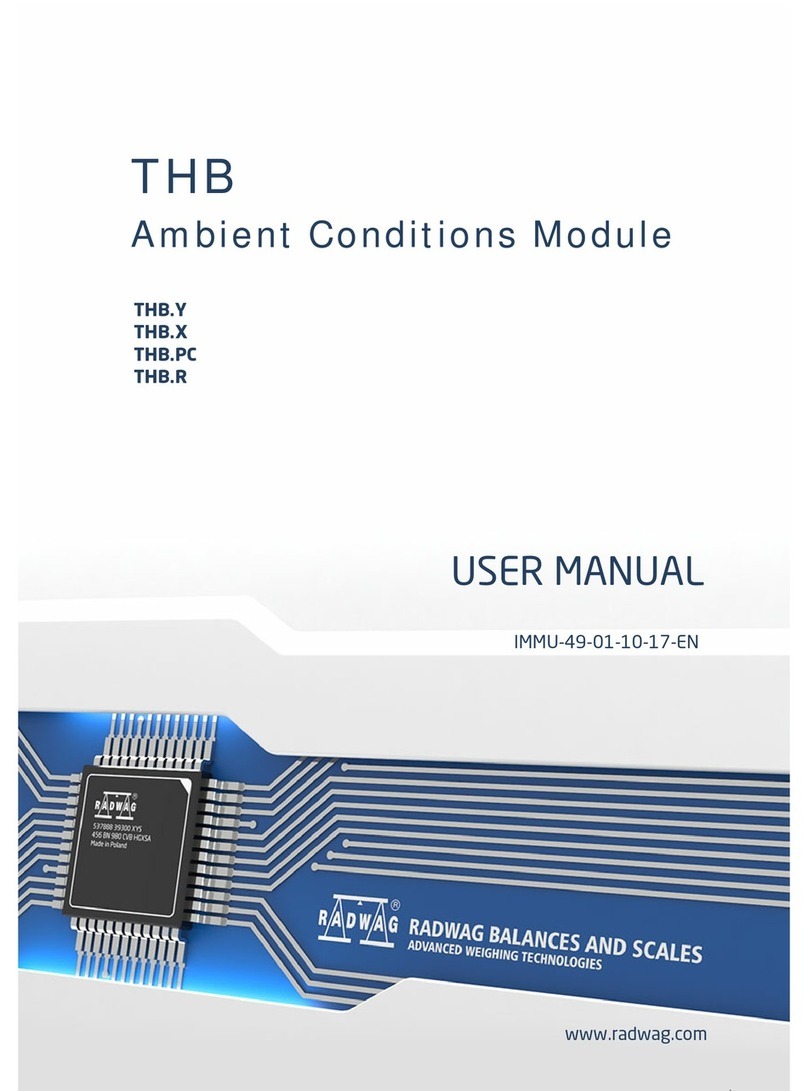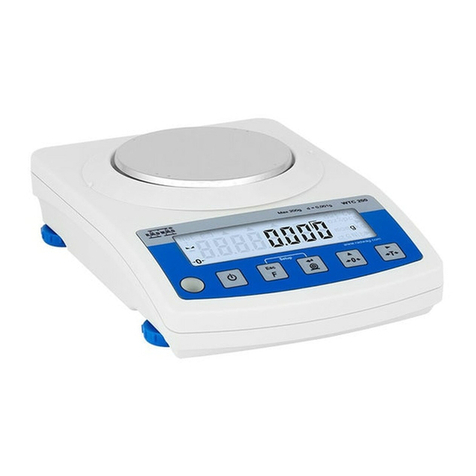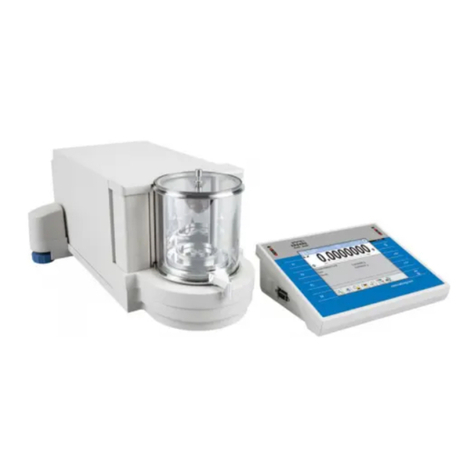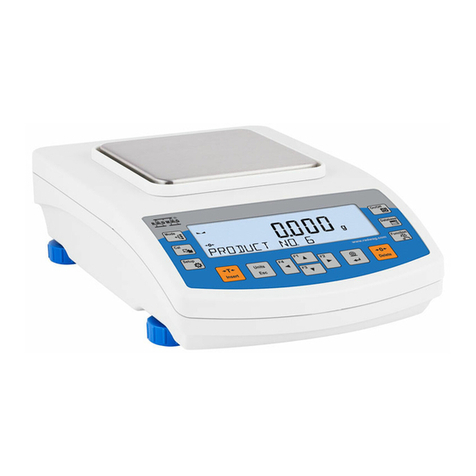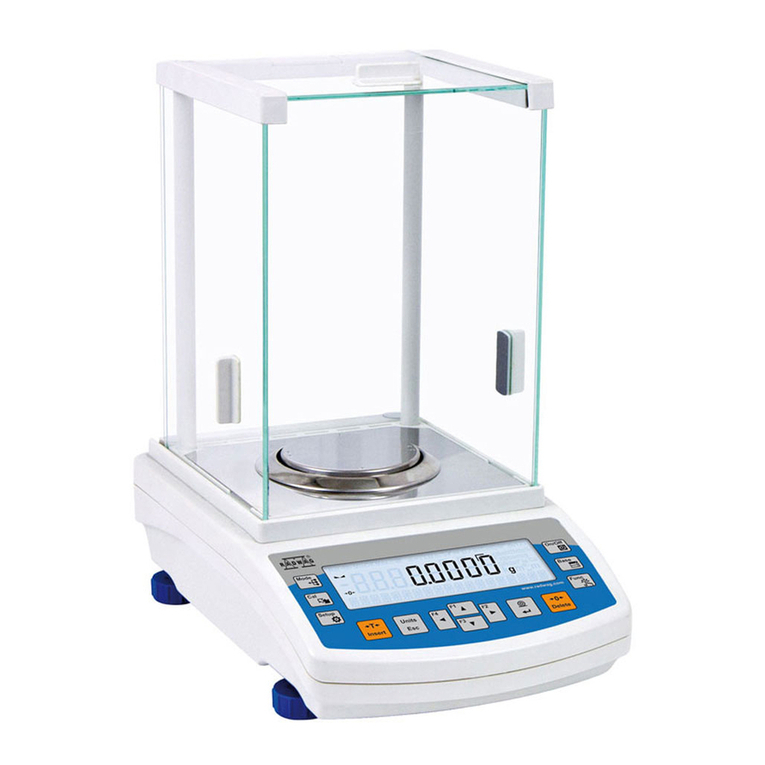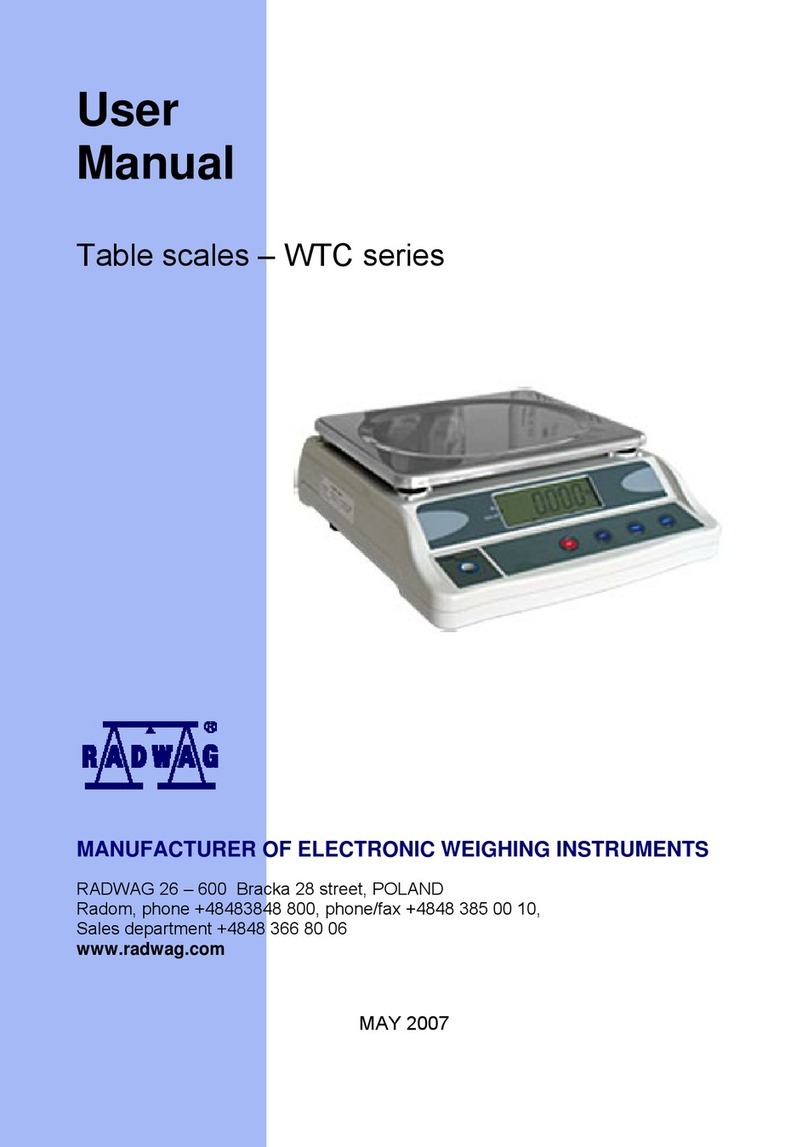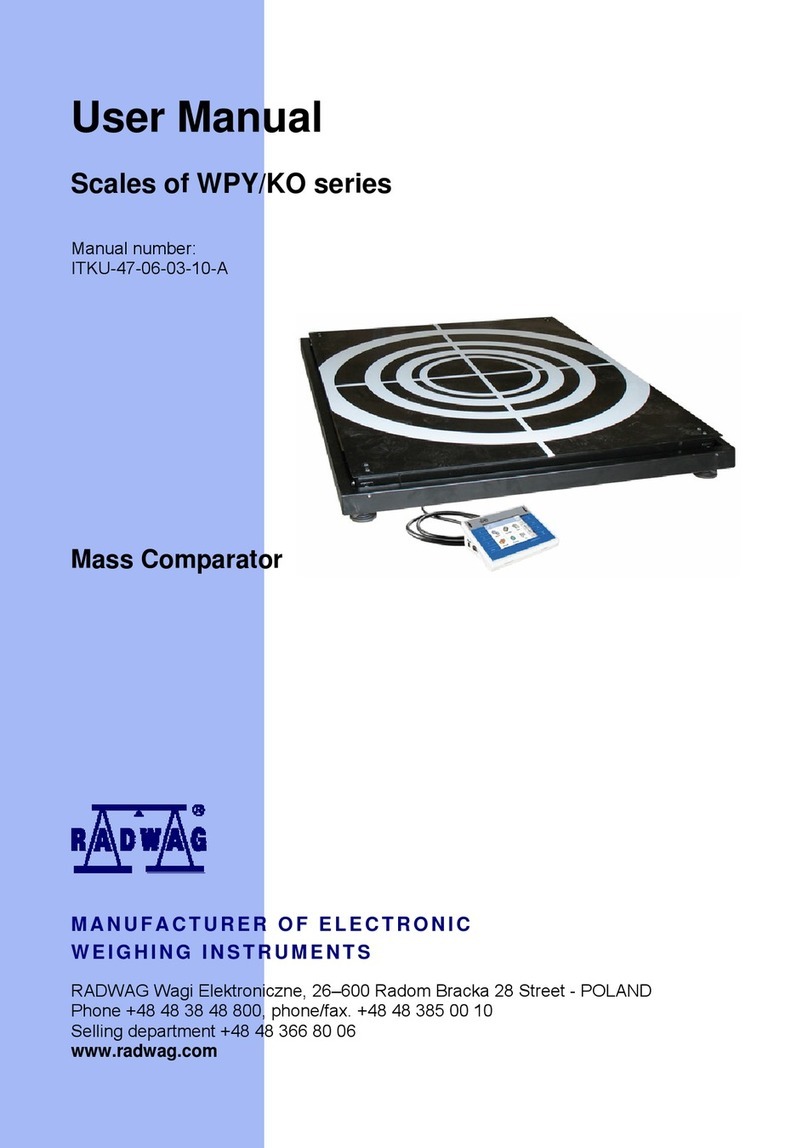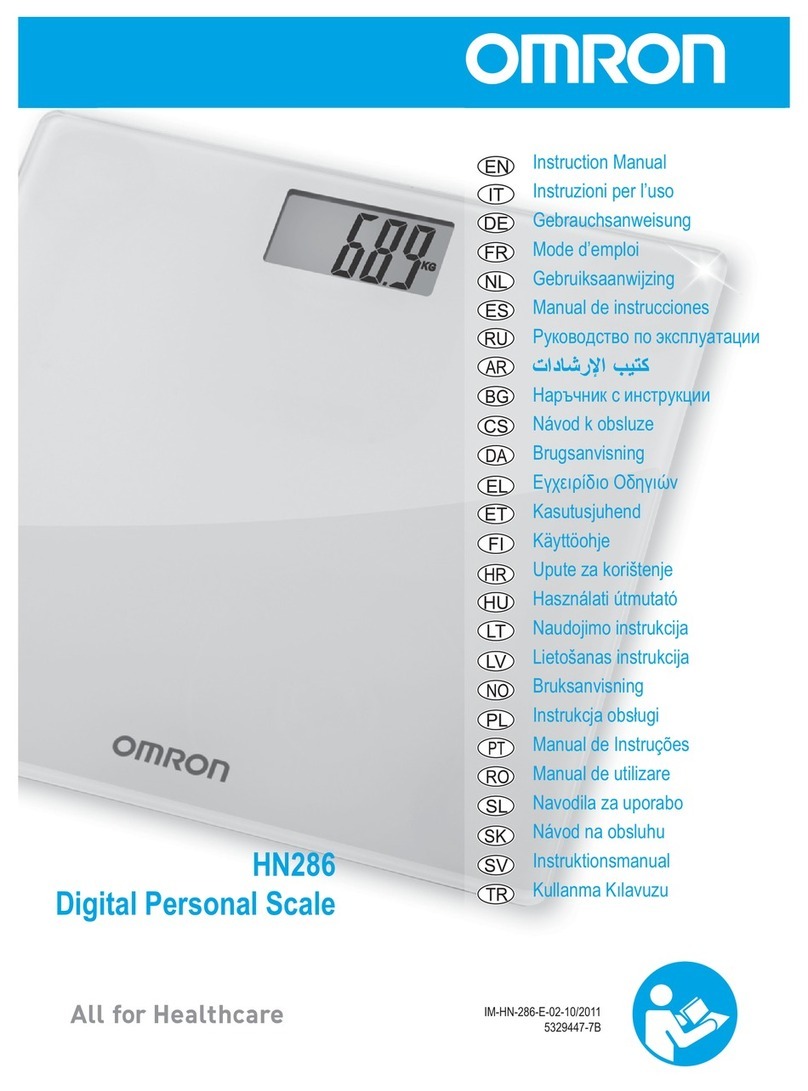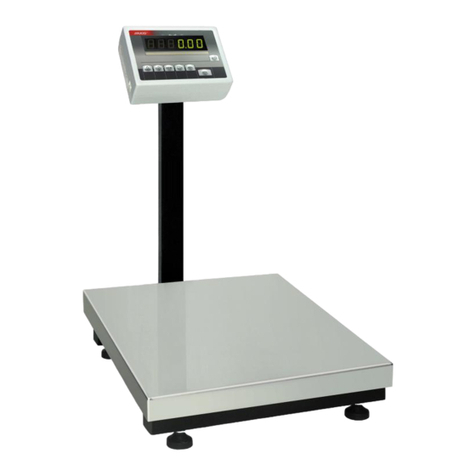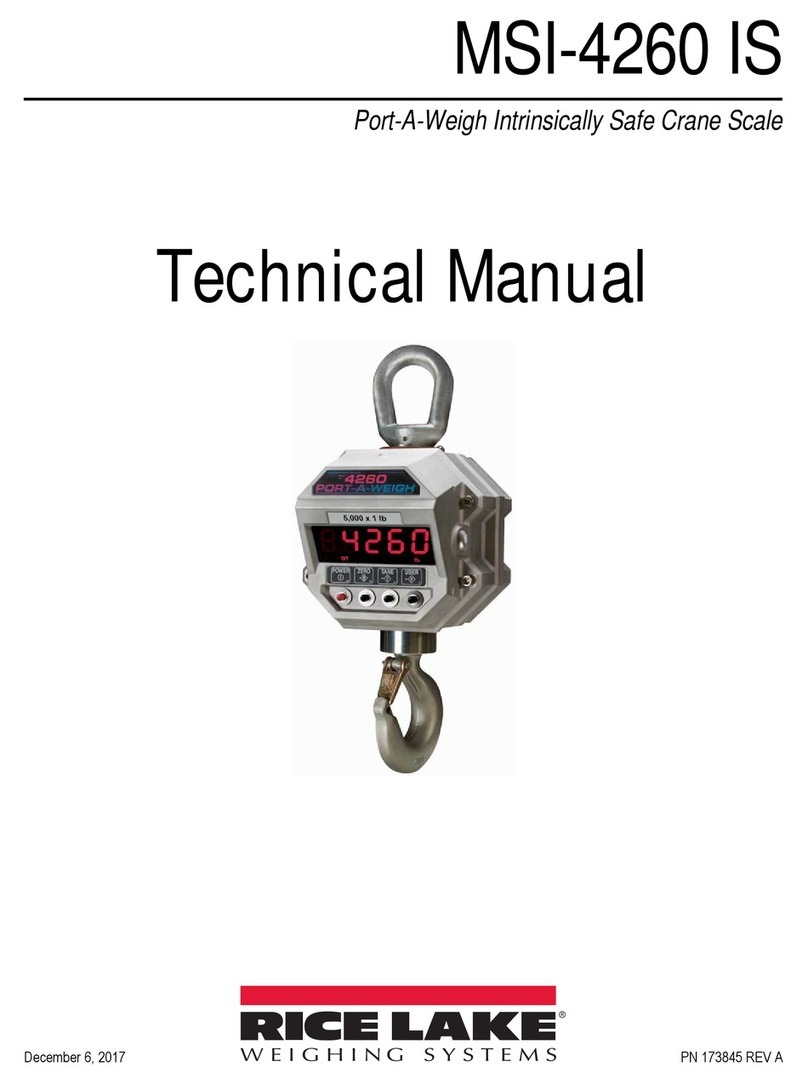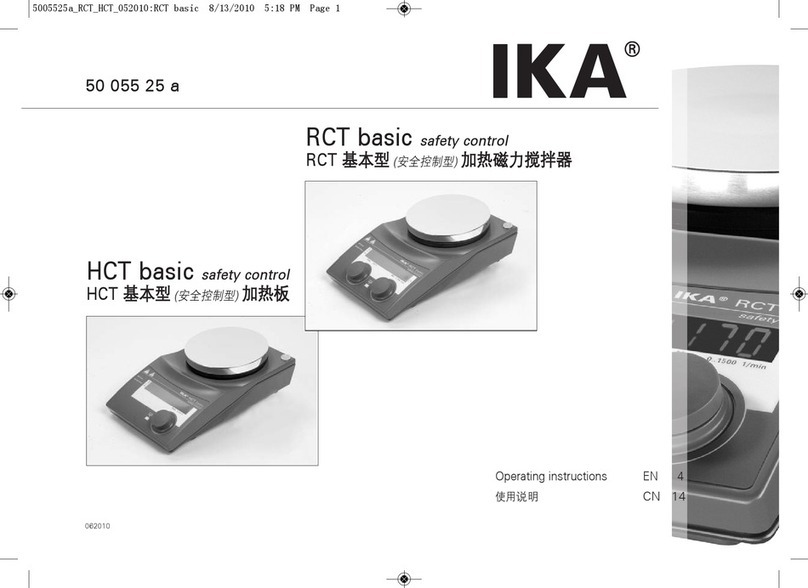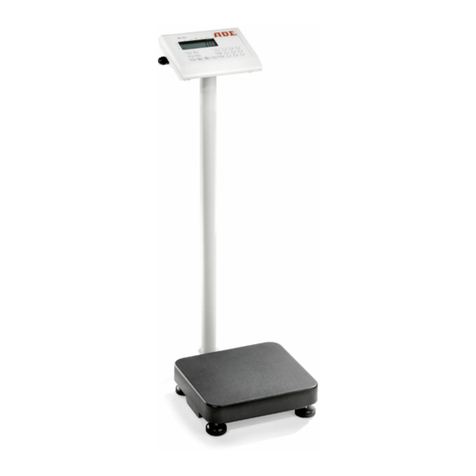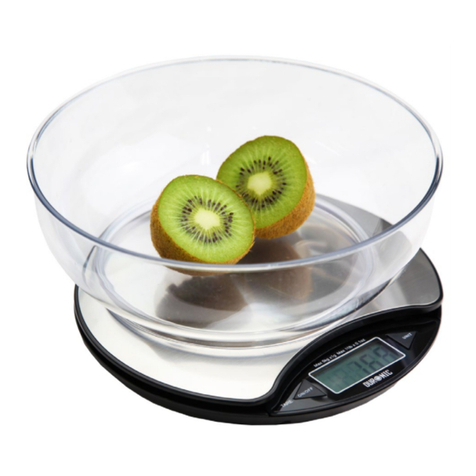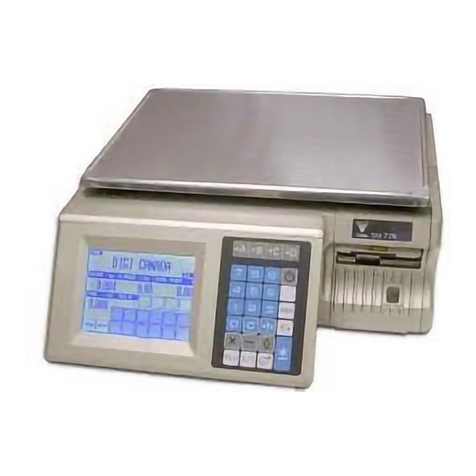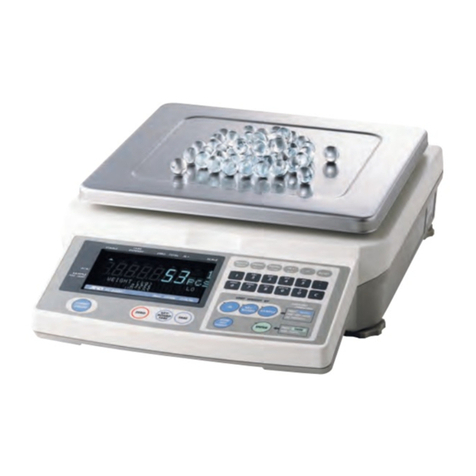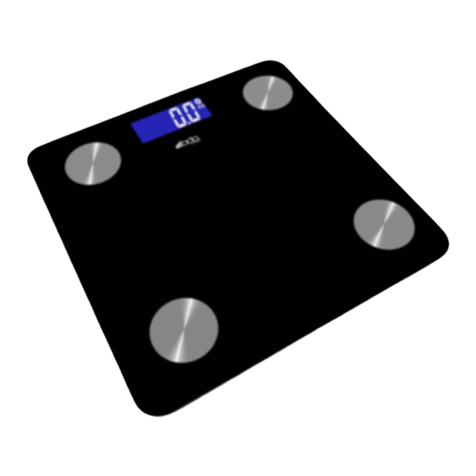
- 4 -
10.3 User unit ................................................................................................... 41
11. MISCELLANEOUS PARAMETERS ..................................................... 42
11.1 Available menu languages ........................................................................ 42
11.2 Accesss levels .......................................................................................... 42
11.3 ‘Beep’ sound – reaction on pressing function button ................................ 43
11.4 Backlight and adjusting display brightness ............................................... 43
11.5 Backlit turn-off time ................................................................................... 43
11.6 Auto switch-off .......................................................................................... 43
11.7 Date .......................................................................................................... 44
11.8 Time .......................................................................................................... 44
11.9 Date format ............................................................................................... 44
11.10 Time format ............................................................................................... 45
11.11 GLP Autotest ............................................................................................ 45
12. INFORMATION ON THE DEVICE ....................................................... 48
13. ADJUSTMENT PROCEDURE ............................................................. 49
13.1 Internal adjustment ................................................................................... 49
13.2 Adjustment menu parameters ................................................................... 51
13.3 Manual adjustment ................................................................................... 52
13.3.1 Internal adjustment ..................................................................... 52
13.3.2 External adjustment .................................................................... 53
13.3.3 User adjustment ......................................................................... 53
13.4 Report on adjustment – printout ................................................................ 54
14. DETERMINING PRINTOUT CONTENT .............................................. 55
14.1 Report on adjustment ............................................................................... 55
14.2 Header printout ......................................................................................... 56
14.3 GLP PRINTOUT – measurement result section ....................................... 58
14.4 Footer printout .......................................................................................... 59
14.5 Non-standard printouts ............................................................................. 61
14.5.1 Inserting texts ............................................................................. 62
14.6 Variables ................................................................................................... 65
15. DATABASES ........................................................................................ 66
15.1 Users ........................................................................................................ 66
15.2 Products.................................................................................................... 69
15.3 Tares ........................................................................................................ 70
15.4 Weighings ................................................................................................. 71
15.5 ALIBI memory ........................................................................................... 74
16. DATABASE EXPORT AND IMPORT ................................................... 77
16.1 Database export ....................................................................................... 78
16.2 Database import ....................................................................................... 79
16.3 Measurement data printout ....................................................................... 79
17. OPERATION MODES .......................................................................... 81
17.1 Operation modes accessibility .................................................................. 82
17.2 Parts Counting – equal weight pieces ....................................................... 83
17.2.1 Parts Counting mode setup ........................................................ 83
17.2.2 Reference Sample Weight determination with the use of sample
of known quantity........................................................................ 84
17.2.3 Entering Reference Sample Weight ........................................... 86

